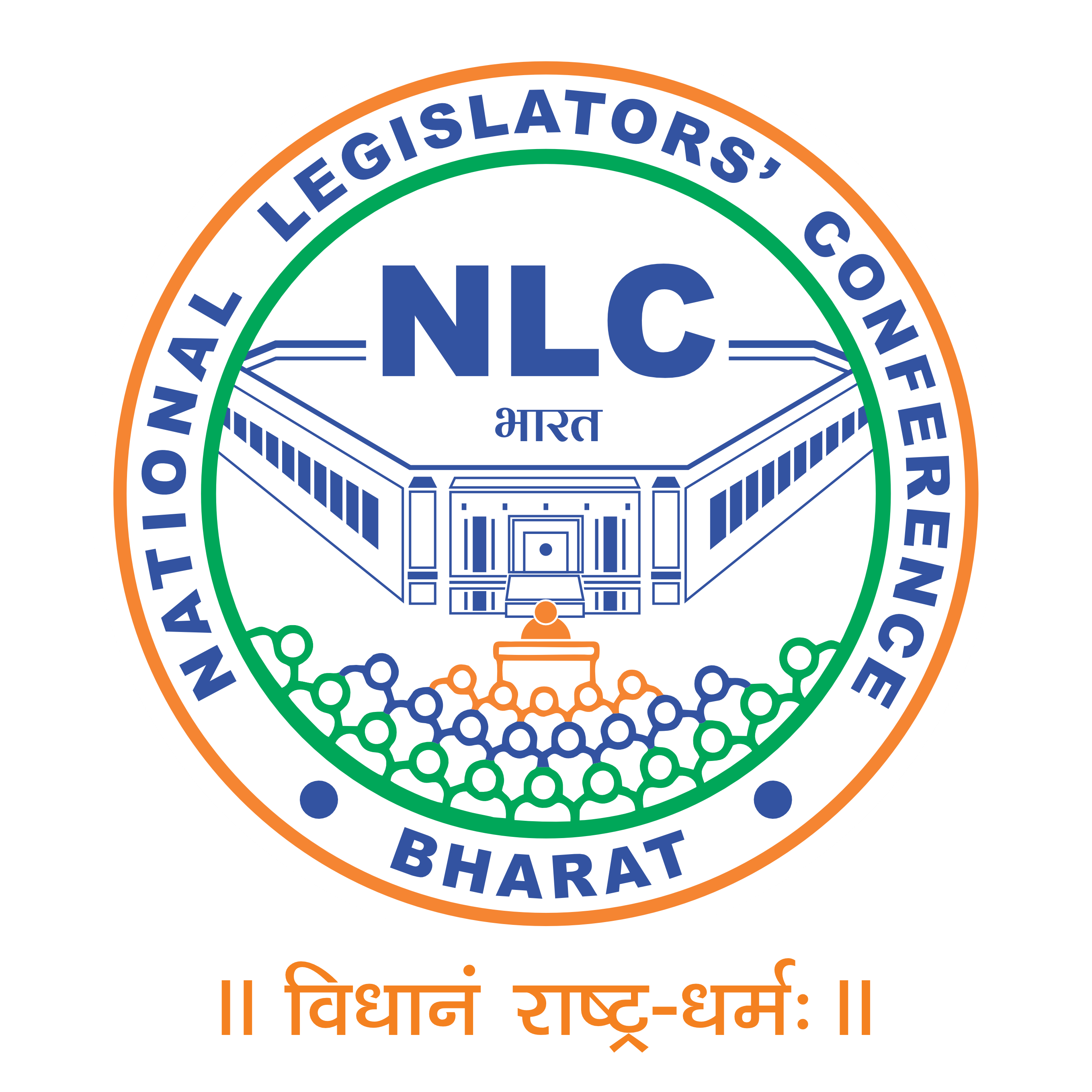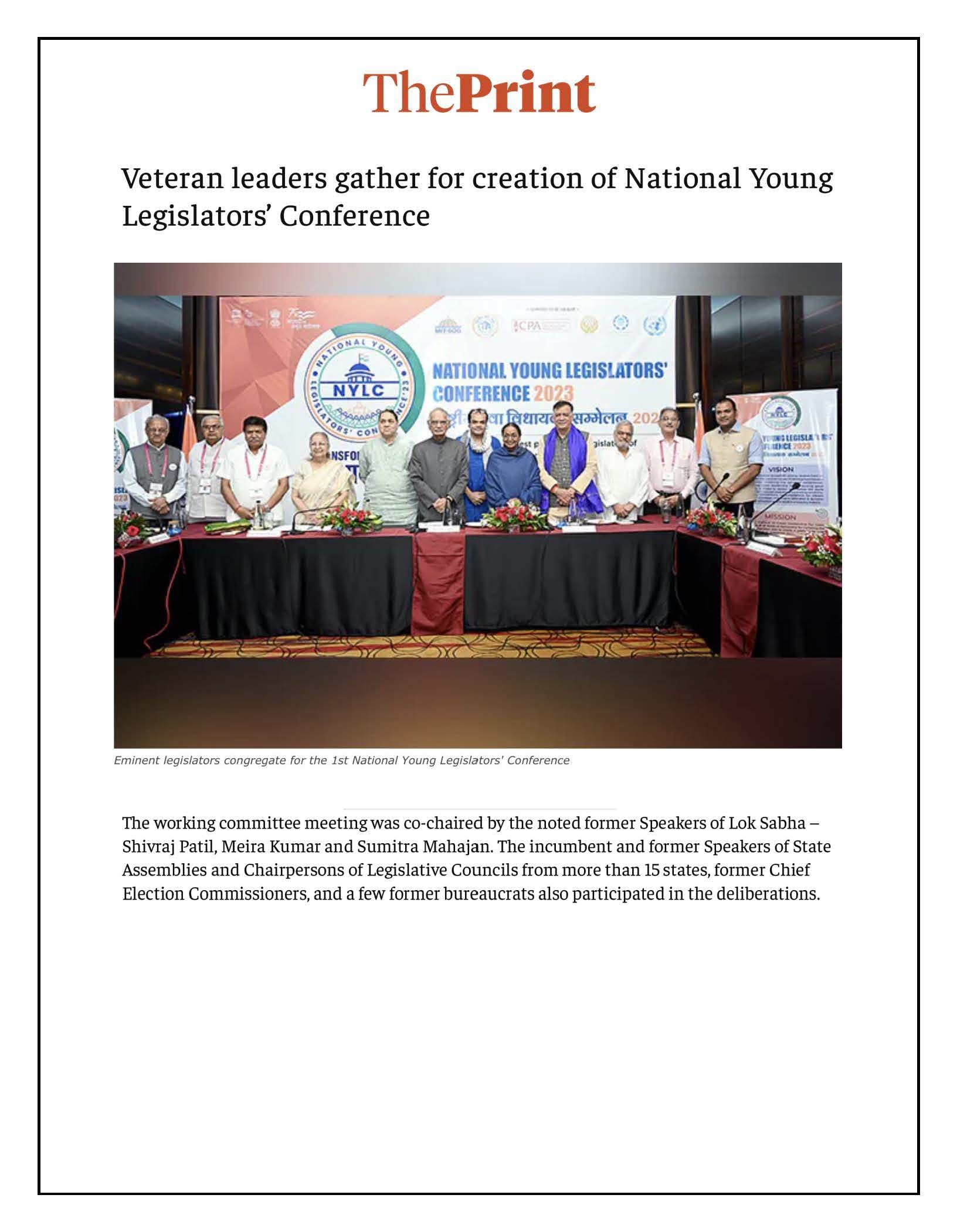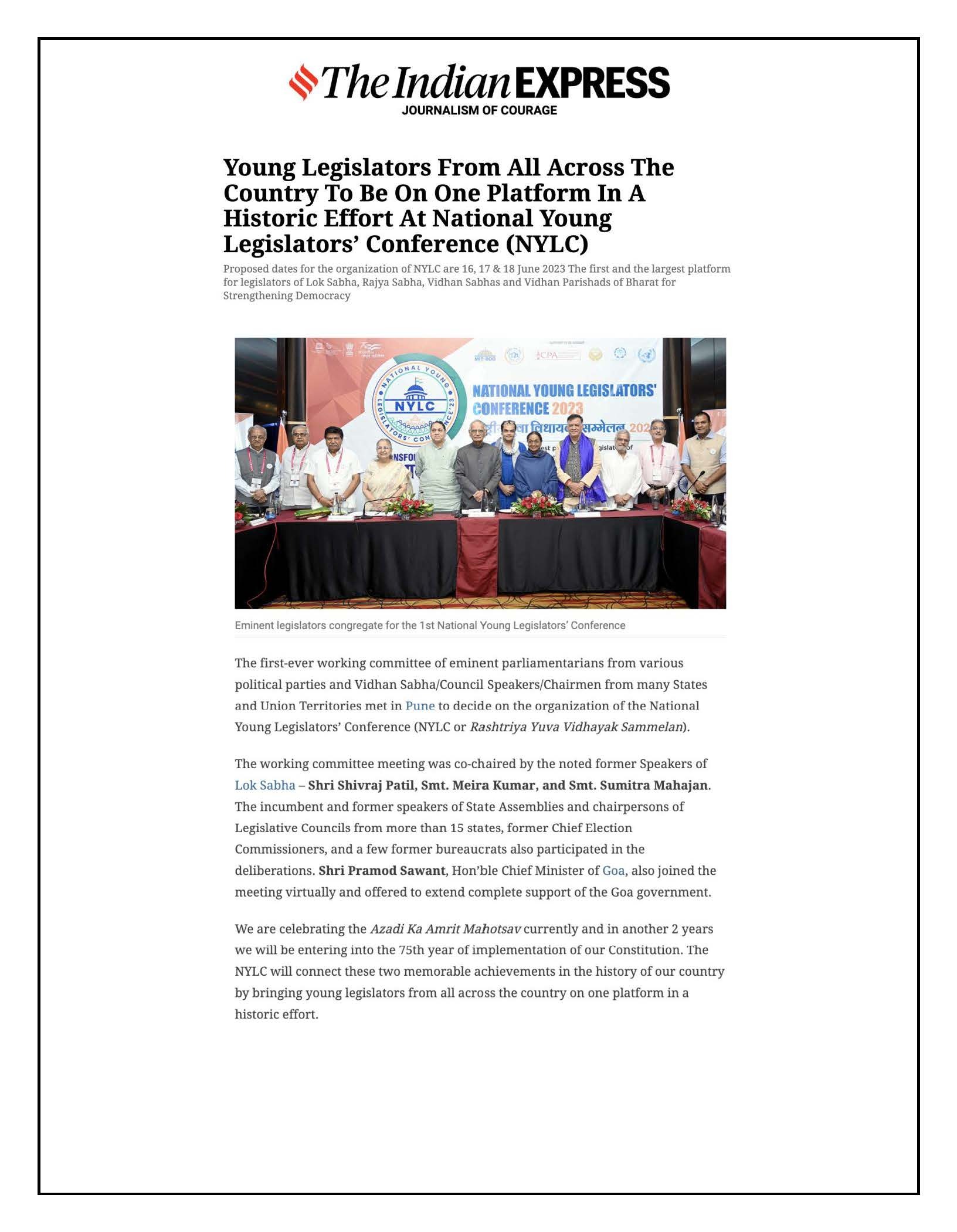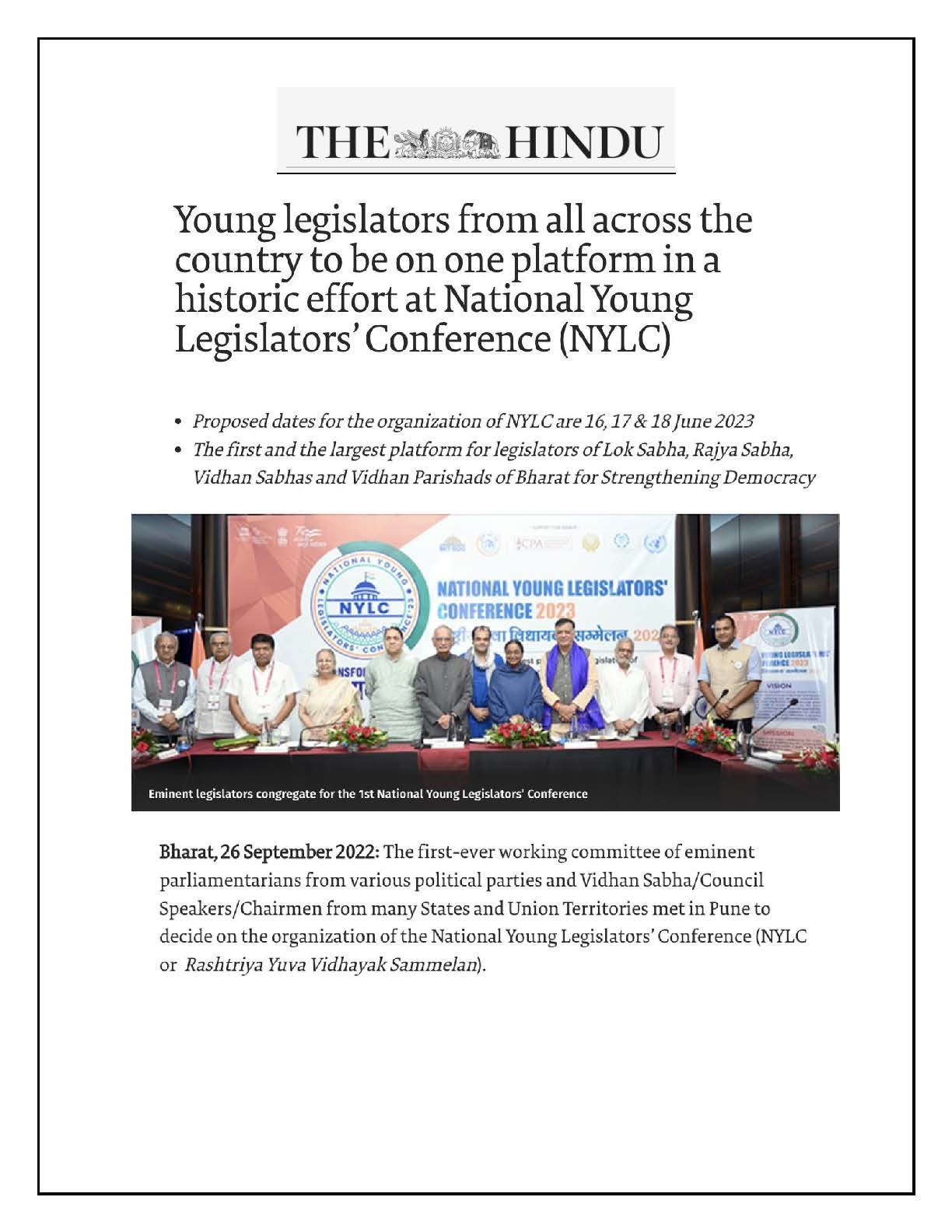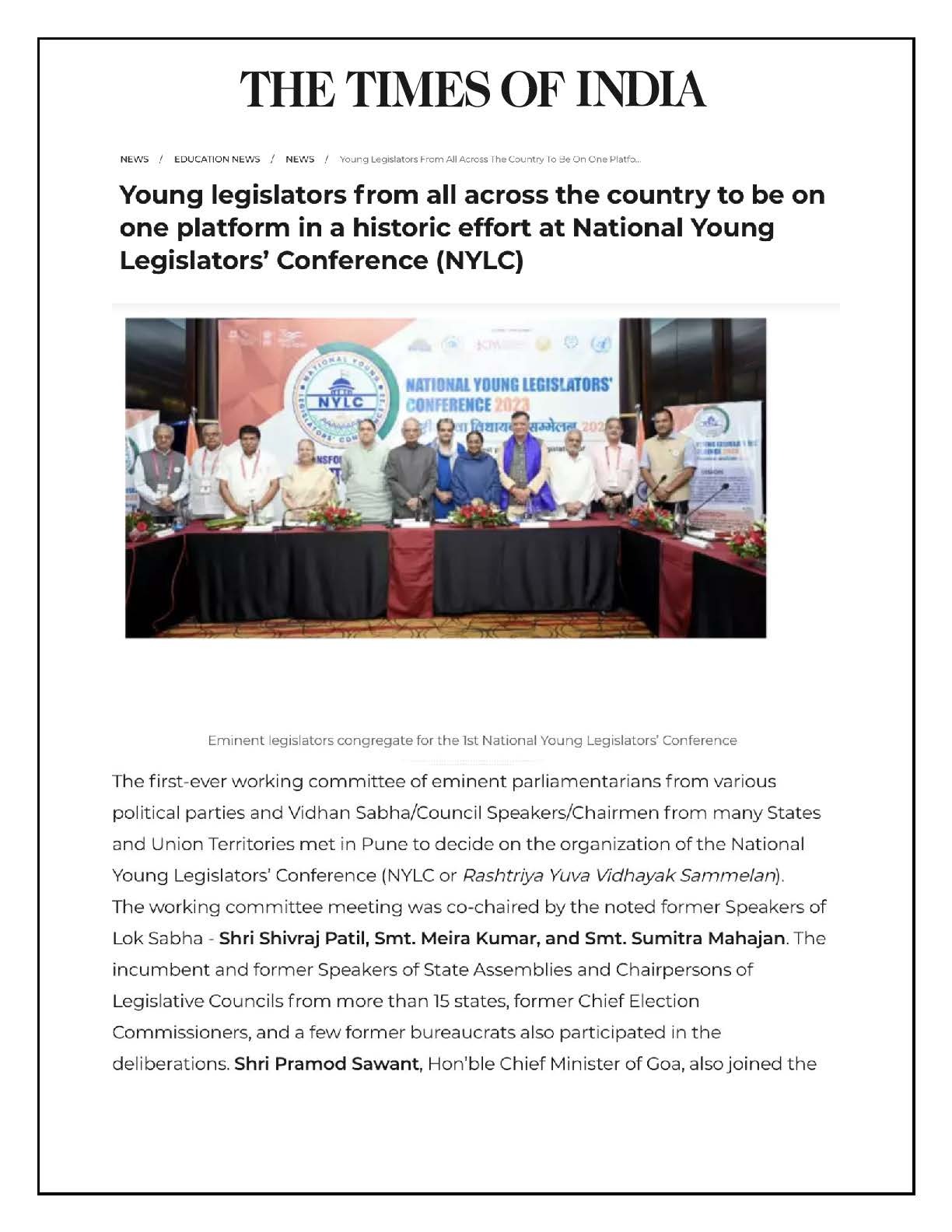The elected leaders such as Members of Legislative Assemblies (MLAs) and Councils (MLCs), work under a lot of pulls and pressure. A rigorous work environment can be very stressful and can also lead to unproductive outcomes. Currently, each MLA represents on an average four lakhs or more people. The lives of the people in the constituency and people in the state at large are affected by the significant decisions taken by the legislators. The ability to make good decisions might be impaired by high amounts of stress. Decisions made by MLAs can be improved by reducing their stress. Therefore, it becomes important for the elected leaders to manage stress to maintain sound state of mind in order to improve productivity and efficiency.
Being a public representative of an aspirational populace, one must learn the art of time management to reduce the stress that arises from a heavy and hectic work schedule. This indicates that MLAs have a demanding schedule, and they struggle to manage their professional lives which results in stress. Evidence shows that political leaders can manage their time and offices in a variety of ways. Some of the methods are discussed below.
First, being organized and prioritizing their tasks can help leaders manage their time effectively, which will help them feel less stressed. It can be done by utilizing a planner app or calendar to arrange their day, assigning duties to others, and creating achievable goals. Political leaders can create a schedule of workdays and widely disseminate it among their constituents. The office hours should be mentioned in the schedule and a little time can be preserved for the practice of mindfulness, yoga, physical exercise, and hobbies as a part of relaxation and recovery. A good time management can prevent weariness and burnout.
Second, the stress can be managed by proper staffing in the leader’s office. Furthermore, there is little realization that the existing office staff lacks professional traits and is undertrained in soft skills. This has been a major reason behind many constituents facing trouble getting their complaints resolved. As a result, they repeatedly visit the leader’s office with the same problems further adding to the workload at the leader’s office. To guarantee the timely delivery of support and services to the constituents, it is now crucial to have the appropriate number of assistants with the appropriate abilities and attitudes, which can be helpful to diffuse the stress at the workplace.
Third, the acceptance of technology can prove to be a big leap in timely addressing the issues of the people and party. Leaders from the rural hinterlands can also be strongly benefitted using technology to carry out their official (and unofficial) tasks. Political leaders frequently spend more time attending events like weddings, funerals, and felicitation ceremonies. Technology can make the social-to-political transaction easier without jeopardizing the “connect” component. It is possible to use a range of social media technologies, including video calls, Facebook Live, and Instagram Live. It can ensure virtual presence of the leader wherever she or he cannot reach physically. Also, by so doing, political leaders can prioritize their official work in addition to saving time. While voters are demanding, they also value honesty, commitment, hard work and have a great level of understanding about their elected representative’s responsibilities along with the social roles. The technological interface between leader and people as well as between people and leader’s office can be helpful in managing the stress levels.
Fourth, MLAs have to frequently organize delegations’ visit to the public offices or dharnas & sit-ins outside public offices to help the people. Elected representatives have been pressuring themselves to ensure number of services through personal interventions. The leaders continue to be preoccupied with these tasks. Smart leaders nowadays constitute their own mechanisms for proper follow-ups with different offices and keep records of communications. It helps in streamlining the follow-ups and information flow to the people resulting in overall diffusion of stress in relations between the leader and governmental offices on the one hand and leader and people on the other hand.
Finally, elected leaders are frequently in the spotlight and are the target of close scrutiny from the media, voters, and other stakeholders. It results in stress and worries about how the public will see them and the possible effects of their conduct that can result from this. Overall, stress management is essential for the leaders to retain their well-being, productivity, and ability to make decisions. Leaders who use stress-reduction tactics can better serve their constituents and carry out their duties as public servants.
The participants in this session can address the following questions during the discussions:
- How can there be sensitization on the importance of effective time management
- How can there be effective engagement in the use of technology for increasing efficiency and reduce unproductive activities?
- How do we use ICT to increase leader’s presence amongst the people and his interaction with the people without carrying the burden of being physically present everywhere?
- How can we use the media to promote a favorable perception of political leaders in civil society in regard to their roles, responsibilities, and power?
